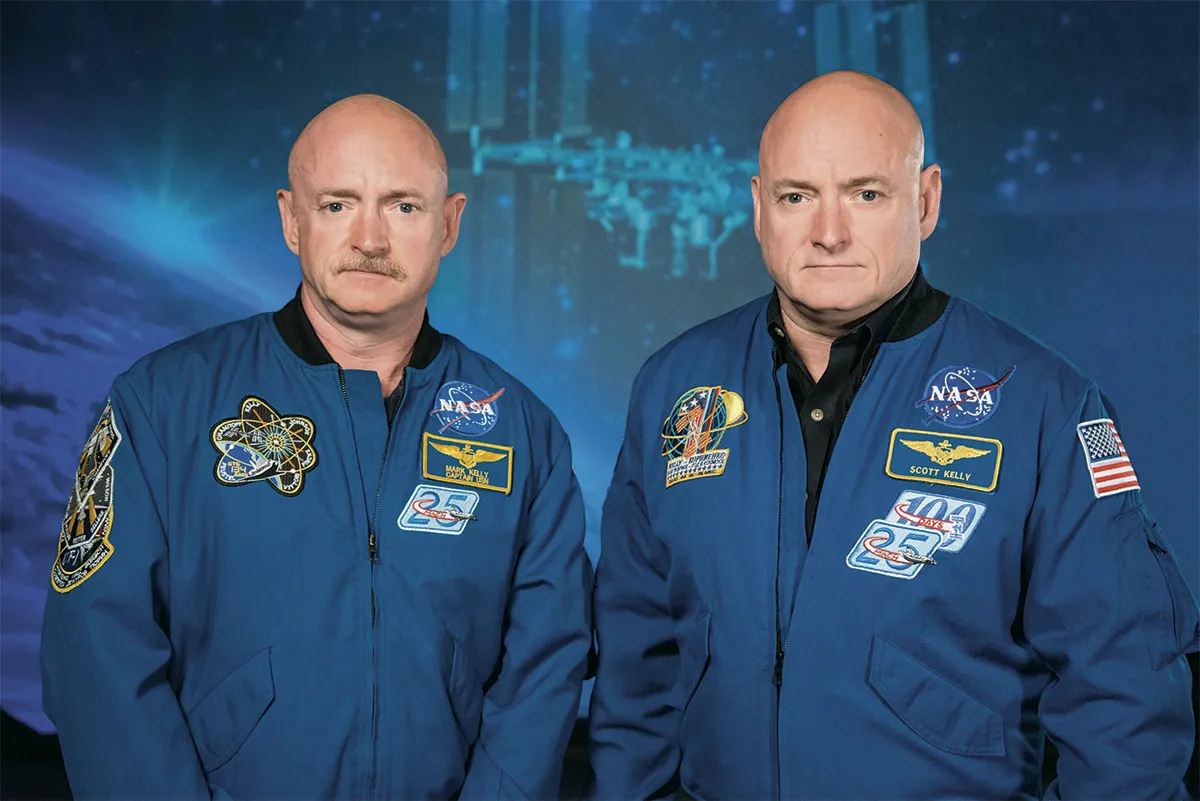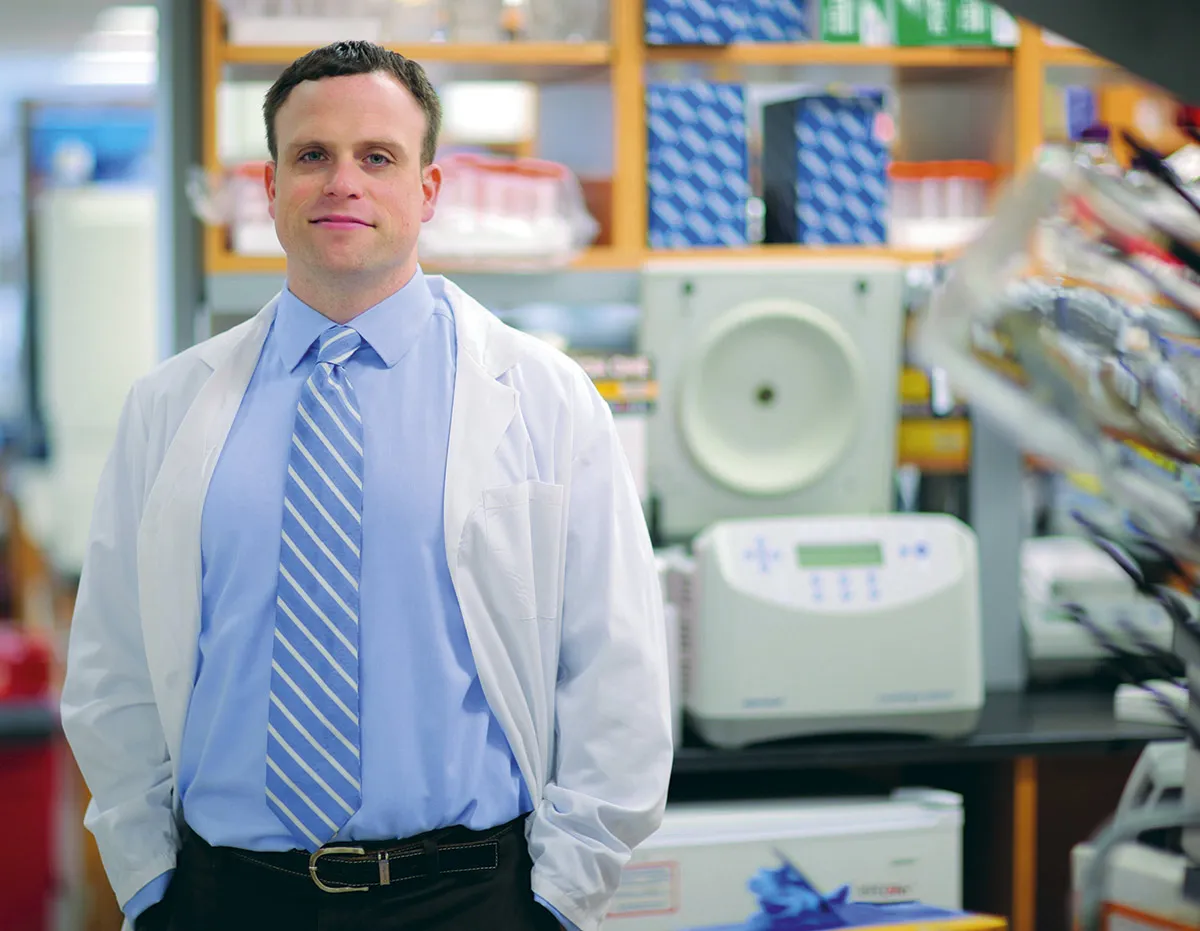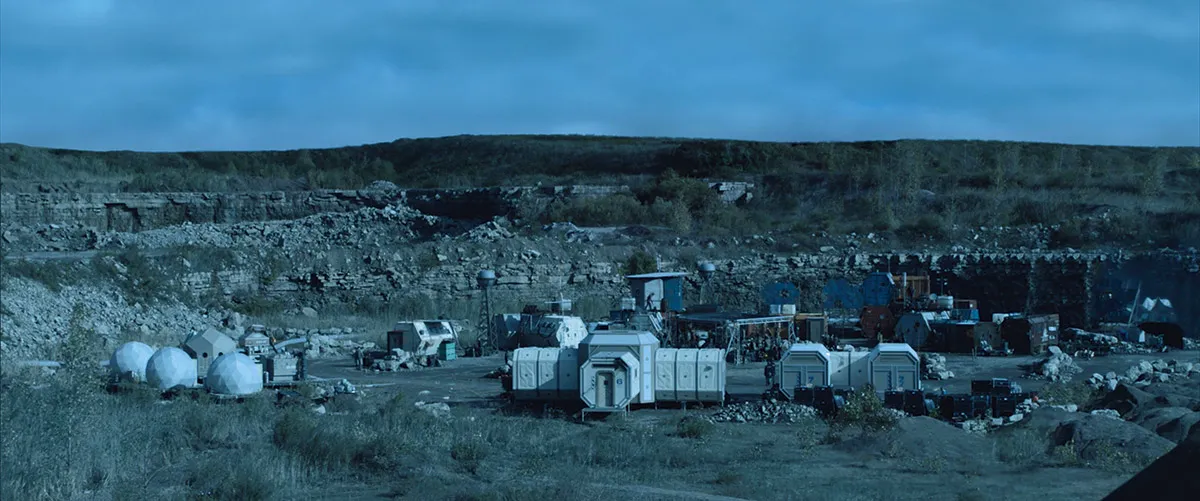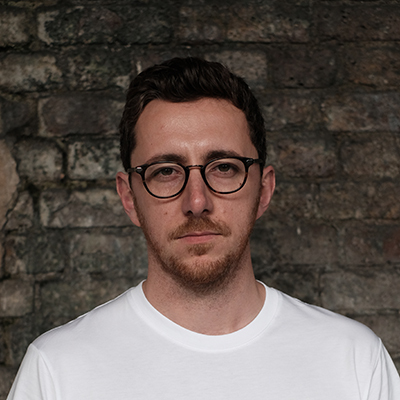‘Per aspera ad astra’. This is the phrase adopted as a statement of intent by space agencies, both real and fictional, that originates in Virgil’s Aeneid. But exactly what kinds of hardship will the human body have to endure to colonise the cosmos?
When Scott Kelly came back to Earth after 340 days in space, it felt like his skin was on fire. Not on re-entry, but later, when he tried to sit down, get dressed or move. Spending close to a year in microgravity will do that to you; aboard the International Space Station (ISS), Kelly’s skin got used to feeling no weight and having nothing touching it.
Like other astronauts, he floated around the ISS with little need for furniture. He didn’t wear shoes and even his clothes drifted around his body instead of hanging from it. So when he came home, a shirt sleeve bearing down on his arm under the pull of Earth’s gravity was alien, painful even. As Kelly himself said in a post-flight press conference: “Adjusting to space is easier than adjusting to Earth…”
Since the year-long mission ended in 2016, Kelly has become a guinea pig for scientists studying what happens to the human body when it ventures beyond Earth’s atmosphere. Even among astronauts he’s a rare case. Not only did he spend the best part of a year in orbit, but Kelly has an identical twin brother, Mark. It gave NASA an unprecedented opportunity to study the physiological, molecular and cognitive effects of long-term spaceflight.
Scott went to space. Mark, the perfect control subject, stayed on Earth. The brothers are both retired astronauts now, but their contributions to the landmark Twins Study continue and have produced a wealth of information about how space affects the heart, the microbiome, the immune system and more.
Learning about the challenges of spending prolonged periods in microgravity is vital as space agencies and private companies get serious about sending humans back to the Moon and even to Mars. A mission to the Red Planet is potentially a three-year trip, so we need to understand what might happen to anyone trying to make it.
Read more about the future of space exploration:
- Animal astronauts: Why other lifeforms will be crucial to humans living off Earth
- How the upcoming missions to Venus could reveal how life on Earth will end
One of the scientists prodding and poking the Kelly brothers is Prof Christopher E Mason, the lead geneticist on the Twins Study. Mason’s lab at Cornell University is nothing if not ambitious. Its work centres on a “500-year plan for the survival of the human species on Earth, in space, and on other planets.”
As well as studying what happens to astronauts, it involves laying the genetic groundwork for humans to live among the stars. Mason envisions a future in which the human genome can be bioengineered to adapt to almost any environment, augmented with genes from other species that allow us to explore and settle the farthest corners of the Universe.
Mason is serious. His new book, The Next 500 Years, maps out in detail how we’ll do it. Here, he gives us a sneak peek...
It’s 500 years in the future. Paint a picture of what it looks like.
So, 500 years from now, we’ll have two key things. I call these the twin engines of discovery. [The first is] a good list of candidate exoplanets to go to. In the past 10 years, thousands have been catalogued, including several hundred ‘Goldilocks’ planets that are probably not too hot, not too cold and that we could possibly survive on.
In the next 500 years we’ll have, I’m sure, thousands or tens of thousands of other candidates. We could use the intervening time to get better spectroscopy and imaging of the atmospheres to figure out what’s there and then pick the best ones.
What’s the other thing?
The second thing that’ll happen is that we’ll discover a number of genes in the human genome and other genomes, that we could use to regulate our health, design medical treatments or engineer organisms that could survive a long space flight to another planet and survive on it.
And it’s not just for human cells. Microbial cells, of course, would be engineered to produce products, as they do for us now therapeutically. We’ll have a genetic tool kit that will let us counteract the ill effects of long-term space travel, and produce the things we need like food and fuel. And, obviously, the more genomes we have in our kit, the more tools we can make.

Presumably we’d also have some new means of propulsion?
At that time, 500 years from now, let’s propose that we have generation ships and people could live and die in the same spacecraft as they make their way towards one of the new planets. Then we would have humans in more than one Solar System. It would probably take about 20 generations to get there with current propulsion methods.
Nowhere in the book do I presume anything new is developed that doesn’t already exist today. I’m hoping that’ll be wrong. Maybe we’ll have a new fusion propulsion that makes it much faster or some way to fold space-time. That’d be fantastic.
Back in the present, it seems like we’re getting serious about sending humans further out to space.
Yeah, I’d say it’s even hitting a nice acceleration point. If you look at the number of objects that have been sent into space in the past 60 years, it’s reached a super exponential pace in the past two years, for sure.
Aside from the obvious, like the temperature and the lack of air to breathe, what makes spending a lot of time in space so tough on the body?
Reduced gravity wreaks havoc with the immune and vascular systems. That’s a challenge and there’s not much we can do about it. We could have rotating space platforms or magnetic boots like in [the sci-fi show] The Expanse, but those aren’t really deployed yet. So, there’s no way around it.
The body does what it can to respond in the short term, though. A lot of [astronauts] have spikes in cortisol, or immune stress signatures. They get up [into space] and their bodies are really reacting. It’s very uncomfortable. For the first few days, they often have really sensitive skin. But within a few days they adapt.
What else makes space dangerous?
Maybe the most important thing, in terms of health, is radiation – not just in low Earth orbit, but when you get farther out to Mars or on lunar missions. That’s really the biggest risk and it’s something we can see in the molecular data.
We can see indications of the damaged DNA coming out in the urine and we can see it in the blood. You see telomeres [essentially caps that protect the ends of chromosomes from degradation and unnecessary repair] and DNA getting broken. It’s the equivalent of about five or six X-rays per day. You can survive it, obviously, because people have been coming back, but, you know, you probably shouldn’t have five X-rays a day.
So that’s the biggest hazard, the one that NASA and our staff are most worried about. That’s why we’re spending so much time thinking about pharmaceutical ways to boost radiation-repair mechanisms or even ways of using genes from other organisms that have already adapted to radiation.
Read more about space exploration:
- How humanity will return to the Moon: The future of lunar exploration
- James Webb Space Telescope: Inside the high-stakes testing of Hubble’s £7.2bn successor
How have you found working with the Kelly brothers? Is it still strictly a work relationship or have you become buddies?
For a long time, they were research subjects. During the mission and immediately after, when we were doing a lot of sampling, it was very hands-off. If you’re researching subjects you’re not supposed to grab a beer with them, much as you might like to.
But Scott and Mark are both retired now. They’re no longer NASA employees, they’re just retired dudes walking around the planet. So we’ve started to do more together, we’re talking about what we’ve learnt.
I guess that they retain the curiosity that you share about all of this.
Yeah, very much. And they’re very competitive because they’re brothers and astronauts. When we got some of the first genetic sequencing data back, they were emailing me and saying, “Okay, who’s got more mutations? Who’s got the longest telomeres?” They’re competing down to the molecular level.
The physical changes that Scott’s body underwent, did they linger for long after he returned to Earth?
Some features changed within a matter of hours and days. For example, his telomeres got longer in space, but got shorter within days [of being back on Earth]. He got 5cm taller in space because of the lack of compression of his spinal column. That was gone within minutes.
Other measures like metabolites – pretty small molecules in the blood that can indicate inflammation – some of them were spiking extremely high, like thousands of per cent higher than his baseline before the flight. After two or three days, they went back down again, but it was very painful – his ankles swelled up to the size of basketballs for a little while. Really painful.
How do we start bioengineering ourselves so that we’re better suited to spending time in space?
I think we have to use the evolutionary lessons that every creature has learned as part of our own lesson plan, if you will, for humanity. What I mean by that is other creatures have been surviving in harsh environments.
So these different organisms on Earth have found interesting ways to deal with high amounts of radiation, high and low temperatures, salinity. And they serve as, I think, a field guide of adaptations that we can deploy. Say it’s a protein that’s made by an organism that’s resistant to radiation. You can use that as a therapeutic, like the way you grow insulin now. Some cancer therapies and antibody therapies are done this way too.
But it also raises the possibility of human genome editing with genes from other species.
Yes. Human genome editing is something you want to do very slowly and very carefully, ideally over multiple generations. I write in my book that there’s never been a clinical trial going across many generations.
There have been observational studies that have done this. But if we ever do anything to the human genome, really, it would require probably a three-generation study to make sure we didn’t screw anything up.

And it would only be at the end of the third generation that we would have that confidence?
I would think that if after two generations there are no obvious signs of changes in longevity or disease, or obvious deformities, I would feel at least reasonably safe that we can deploy it for more individuals. This is not something we’re going to do in the next five years or even 10 years, although we are engineering cells and infusing them into many patients as we speak.
So do you have a shopping list of genes from other organisms that you think, ‘well, that would be cool to have’?
We’re in the middle of screening lots of organisms to see which extremophiles can survive either in space – on the ISS, we published the papers of organisms that have adapted there – or just in places on Earth.
We have something called the Extreme Microbiome Project. We’re working to categorise all these different sites where we see extreme organisms, like nuclear power reactor cooling water, strange places like that. We’re still discovering so many organisms. It’s a continual process of discovery and the accretion of possible genes.
How far off are we from cherry-picking these genes and being able to use them either for therapeutics or actually implanting them in some way?
For some genes we’ve already shown that it’s working. We have a paper in review now where we’ve shown it works well with immune cells, at least with genes from tardigrades. But these alien genes being put into humans has not been tried outside of cell cultures, to my knowledge.
What has been done, though, is we’ve also looked at engineered T cells [T cells are a type of white blood cell and are important in the immune system]. You’re not modifying all the cells in a person, but you’re basically taking out T cells, genetically modifying them and putting them back in for therapeutic purposes. This is actually an extremely common feature of a lot of immunotherapies now.
Have you watched The Expanse?
Yes. I just got the book. I wanted to watch the show first, but I haven’t read the books yet.

It struck me as a vivid imagining of what a colonised Solar System might look like. What did you think?
I love the concept that humans have a capacity and almost this inevitable future in which we’ve settled the Solar System. The word ‘colony’ has fallen out of favour because of all the historical baggage. But I love the concept because I really hope and believe that it will come to pass.
The thing I take some issue with is this: it still seems there’s been no sociological or intergovernmental advance, we’re just as petty and tribal and backstabbing as we are, as we always have been. Maybe it’s more accurate. If you look back thousands of years, there’s never been a case where cultures have expanded and had a ‘Kumbaya’ moment and everything’s been fine.
But I would hope that if we reached that stage [we’d also have] a more advanced philosophical and sociological framework for people. But I might be too optimistic there.
It would be nice if you turned out to be right.
Yeah, and you get something like Star Trek, where all of humanity’s united and we’re all exploring together. In Star Trek, it wasn’t until [humans] encountered aliens that humanity kind of nucleated together and said, “Well, we’re all in this together.”
I guess it raises political and ethical questions about space exploration?
Yeah, something I talk about in the book is this idea of cellular liberty or even planetary liberty. If you’re engineering cells you should make it so they can go anywhere you want in the Solar System, or eventually in the Universe. You want to be able to turn on facets of biology that can enable you to live in different places.
Almost like a genetic outfit tailored to each environment?
Yeah, making it more modular, so you’ve got that capacity to go places as needed.
One last thing. Did you see the guy from Neuralink came out and said that we have the technology to make Jurassic Park. Is he right?
Well, you know, there’s the Revive and Restore project where we’re cloning the woolly mammoth and putting it in elephant embryos. We’re working with George Church on that. So that’s happening.
In that case, we have fully preserved, whole blood cells with a completely intact genome. So if you can get the same thing for a dinosaur, you can give it a shot. In the absence of that, it’s going to be really hard. Even with that, it’s really hard. I think I’d put it in the unlikely category. But interesting.
Read more about astronauts:
- Why it's critical the first crew on Mars contains a woman, according to former astronaut Dr Kathy Sullivan
- Eating spinach could protect astronauts from space radiation, study suggests
- 6 out-of-this-world experiments recreating space on Earth
About our expert, Prof Christopher E Mason
Christopher is a geneticist and computational biologist who has been a principal investigator and co-investigator of seven NASA missions and projects. He is a professor at Weill Cornell Medicine. As well as preparing human beings for space travel, his research interests include novel techniques for next-generation genome sequencing and editing.
His book,The Next 500 Years (MIT Press), is out now.
- This article first appeared inissue 364ofBBC Science Focus Magazine–find out how to subscribe here
